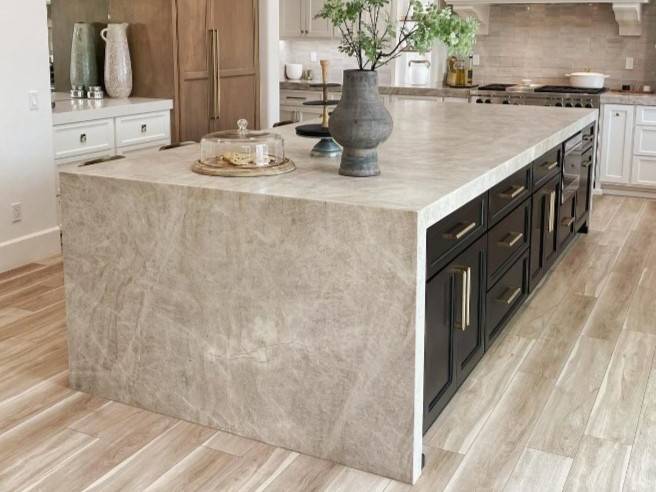Quartzite continues to be one of the most sought-after natural stone materials for countertops, offering a perfect combination of luxury, durability, and timeless appeal. Homeowners and interior designers are increasingly choosing quartzite for its ability to mimic marble while providing superior strength. In this comprehensive guide, we’ll explore the best quartzite countertops for 2025, highlight their key features, and compare them to other materials to help you make the right choice for your space.
What is Quartzite? Natural Beauty vs. Engineered Quartz
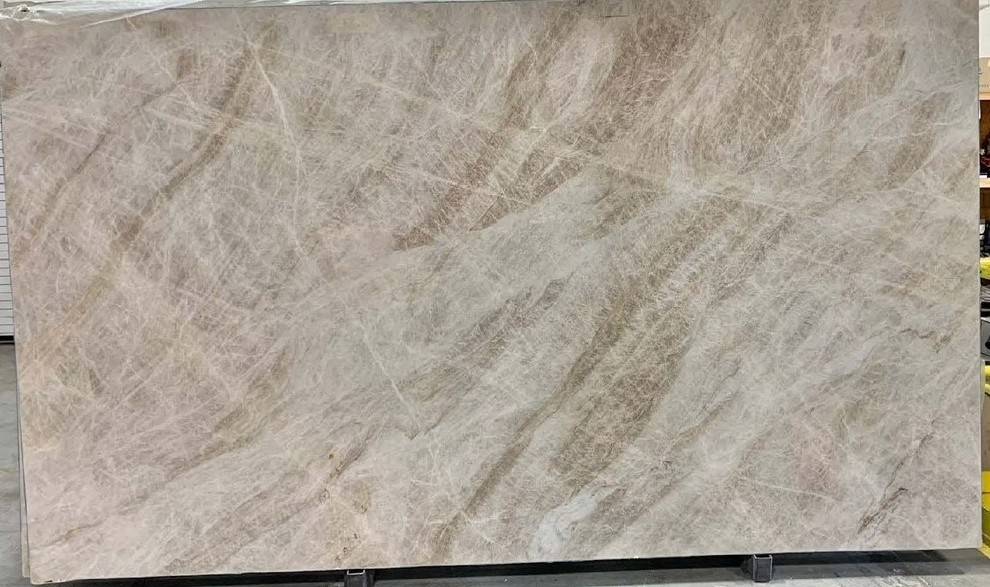
Quartzite is a 100% natural stone formed when sandstone undergoes intense heat and pressure deep within the earth. This process transforms the stone into a dense, durable material with unique veining and colors, making it a favorite for high-end countertops.
Many homeowners mistakenly confuse quartzite with quartz, but they are completely different materials. Quartzite is quarried from the earth, cut into slabs, and polished, much like marble or granite. Quartz, on the other hand, is a man-made engineered surface composed of crushed quartz particles mixed with resins and pigments. While quartz offers uniformity and lower maintenance, it lacks the natural variation and depth that make quartzite so unique.
If you love the look of marble but want a stronger, heat-resistant surface, quartzite is the perfect choice. It combines the elegance of natural stone with the resilience needed for busy kitchens and bathrooms.
Common Myths & Mislabeling of Quartzite
Despite its growing popularity, quartzite is often mislabeled, leading to confusion among buyers. Some stones sold as quartzite are actually marble or dolomite marble, which have entirely different properties.
This mislabeling occurs because these stones may look similar but behave very differently when exposed to everyday wear and tear. A true quartzite is extremely durable, resistant to acids, and harder than glass, while marble or dolomite marble are softer and prone to etching.
One of the biggest misconceptions is the term “soft quartzite”—which does not exist. If a stone is labeled as soft quartzite, it is most likely a type of marble that is being marketed incorrectly. Real quartzite is always hard and will not etch from household acids.
How to Identify Real Quartzite

There are a few simple tests that homeowners and professionals can use to verify whether a stone is true quartzite:
1. The Glass Scratch
Test Quartzite is one of the hardest natural stones, ranking 7 on the Mohs hardness scale. This means it is harder than glass and most metal blades. To test a slab, simply take a small piece of the stone and try to scratch a glass surface. If it easily scratches the glass, it is likely quartzite. If the glass remains untouched or the stone itself crumbles, the material is likely marble or a softer stone.
2. The Acid Etch Test
Acidic substances like lemon juice or vinegar can cause etching on softer stones like marble. A simple way to test quartzite is by placing a small drop of acid on an unsealed surface. If the stone etches or reacts, it is not quartzite. True quartzite will remain unaffected, making it an ideal choice for kitchens where acidic foods are common.
3. Porosity & Water Absorption
Quartzite can vary in porosity depending on the intensity of its metamorphic formation. Some quartzites, like Taj Mahal and Sea Pearl, are highly compact and absorb very little moisture, making them naturally resistant to stains. Others, like White Macaubas and Calacatta Macaubas, have a more open structure and benefit from regular sealing to prevent water absorption and staining.
Top Three Reasons to Choose Quartzite Countertops
1. Extreme Durability
Quartzite is one of the toughest natural stones available, making it highly resistant to scratches and chips. It is harder than granite, making it a long-lasting investment for high-traffic areas like kitchens.
2. Heat & Stain Resistance
Quartzite can handle hot pots and pans without damage, making it an excellent choice for cooking spaces. And with proper sealing, it also resists stains from everyday spills like wine, coffee, and oils.
3. Aesthetic Appeal
Quartzite’s naturally occurring veining and patterns provide a unique, high-end look that enhances any kitchen or bathroom. It is an excellent alternative for those who love marble but want something more durable
Top Quartzite Countertops for 2025
Below are the best quartzite options trending in 2025 for their unmatched beauty, durability, and versatility.
1. Taj Mahal Quartzite
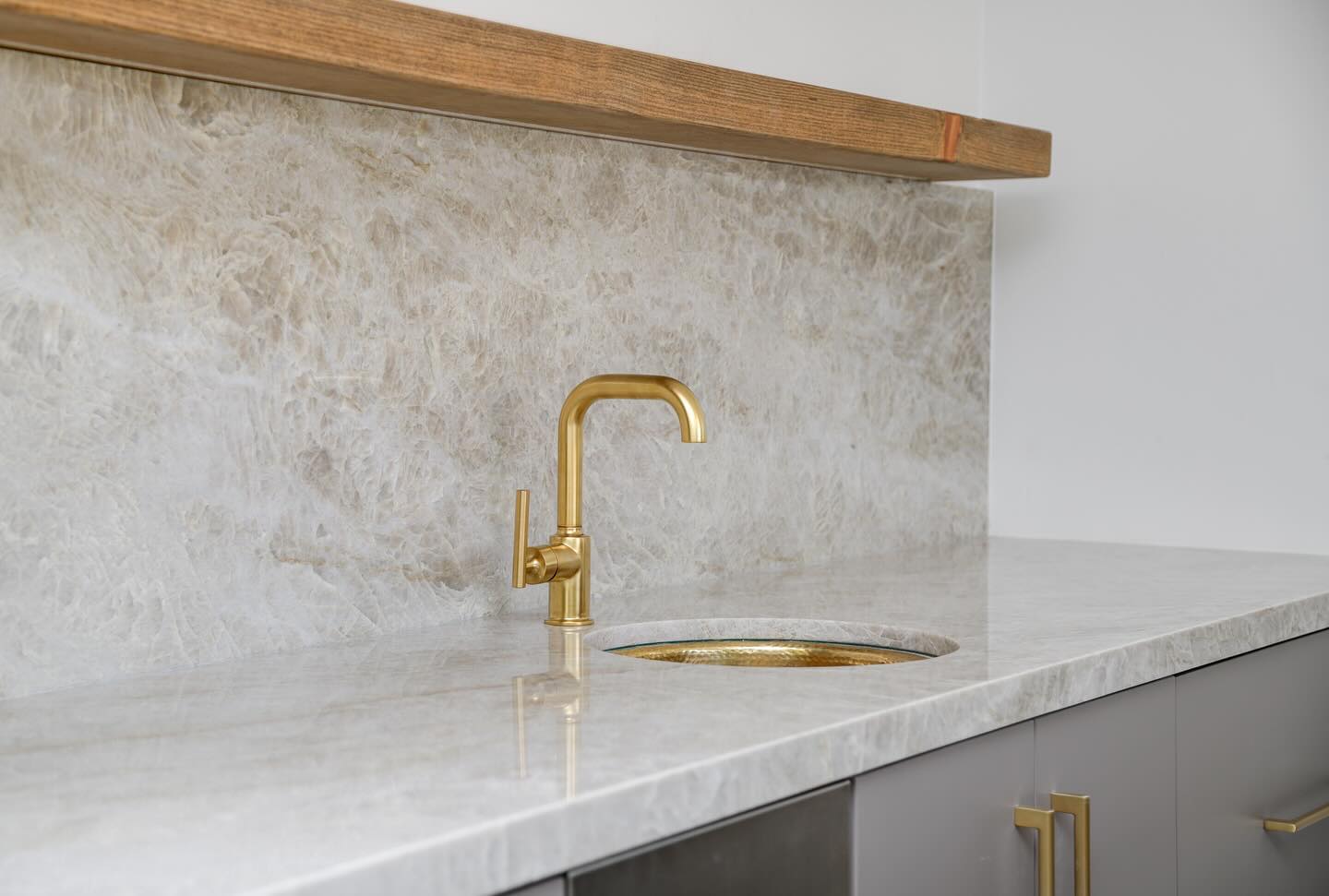
-
- Color: Soft white and beige with subtle veining
-
- Best For: Classic kitchens and elegant bathroom vanities
-
- Why Choose It? A luxurious alternative to marble with superior durability
2. Mont Blanc Quartzite
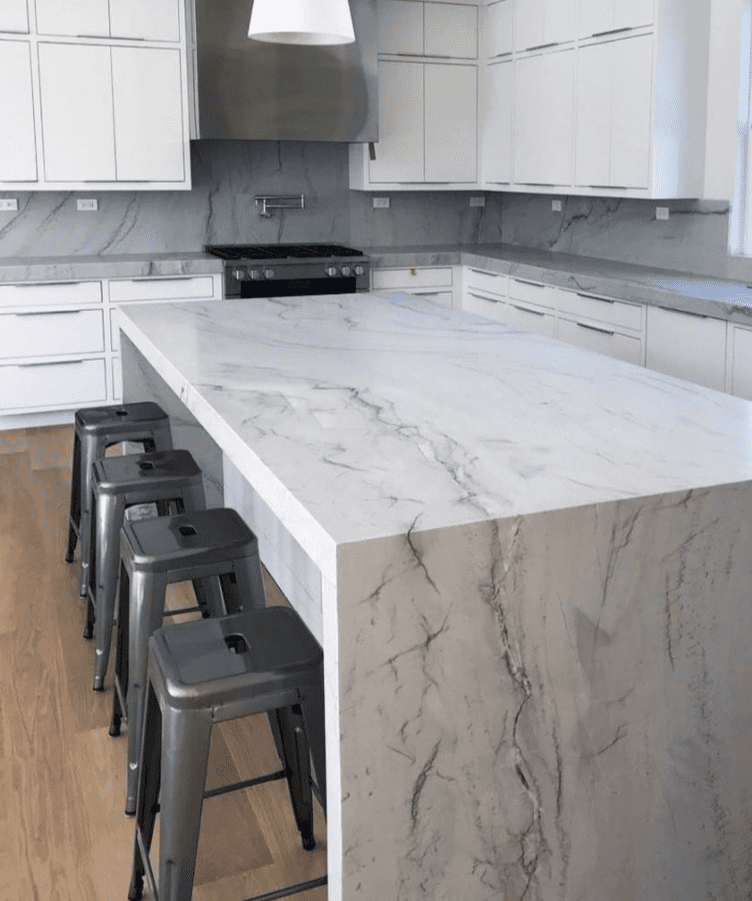
-
- Color: Crisp white background with delicate gray veining
-
- Best For: Modern and minimalist kitchens
-
- Why Choose It? Offers a clean, sophisticated look with excellent resilience
3. Blue Roma Quartzite
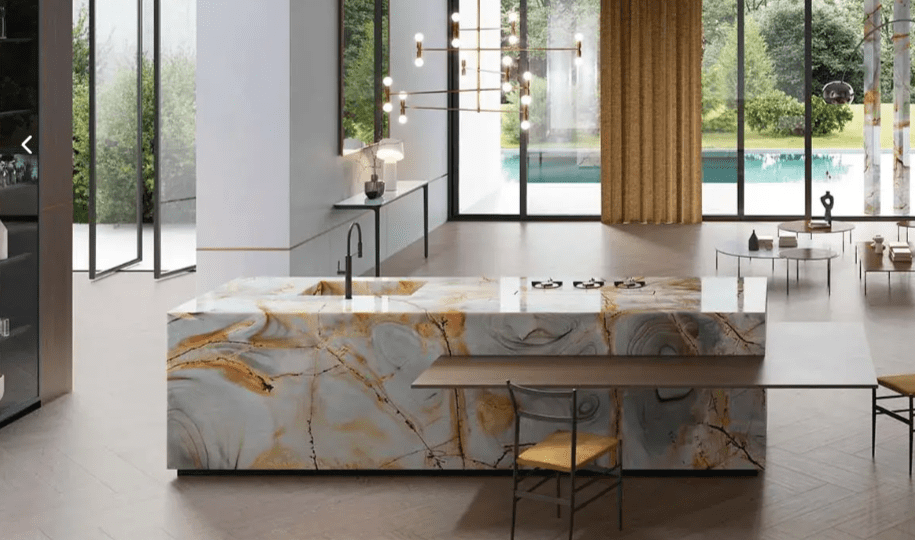
-
- Color: Striking blue hues with gold veining
-
- Best For: Statement kitchen islands and accent walls
-
- Why Choose It? A unique choice for bold, luxurious interiors
4. Sea Pearl Quartzite

-
- Color: Muted gray-green tones with soft movement
-
- Best For: Neutral-toned kitchens and bathrooms
-
- Why Choose It? Pairs well with various cabinetry styles and colors
5. Macaubas Fantasy Quartzite
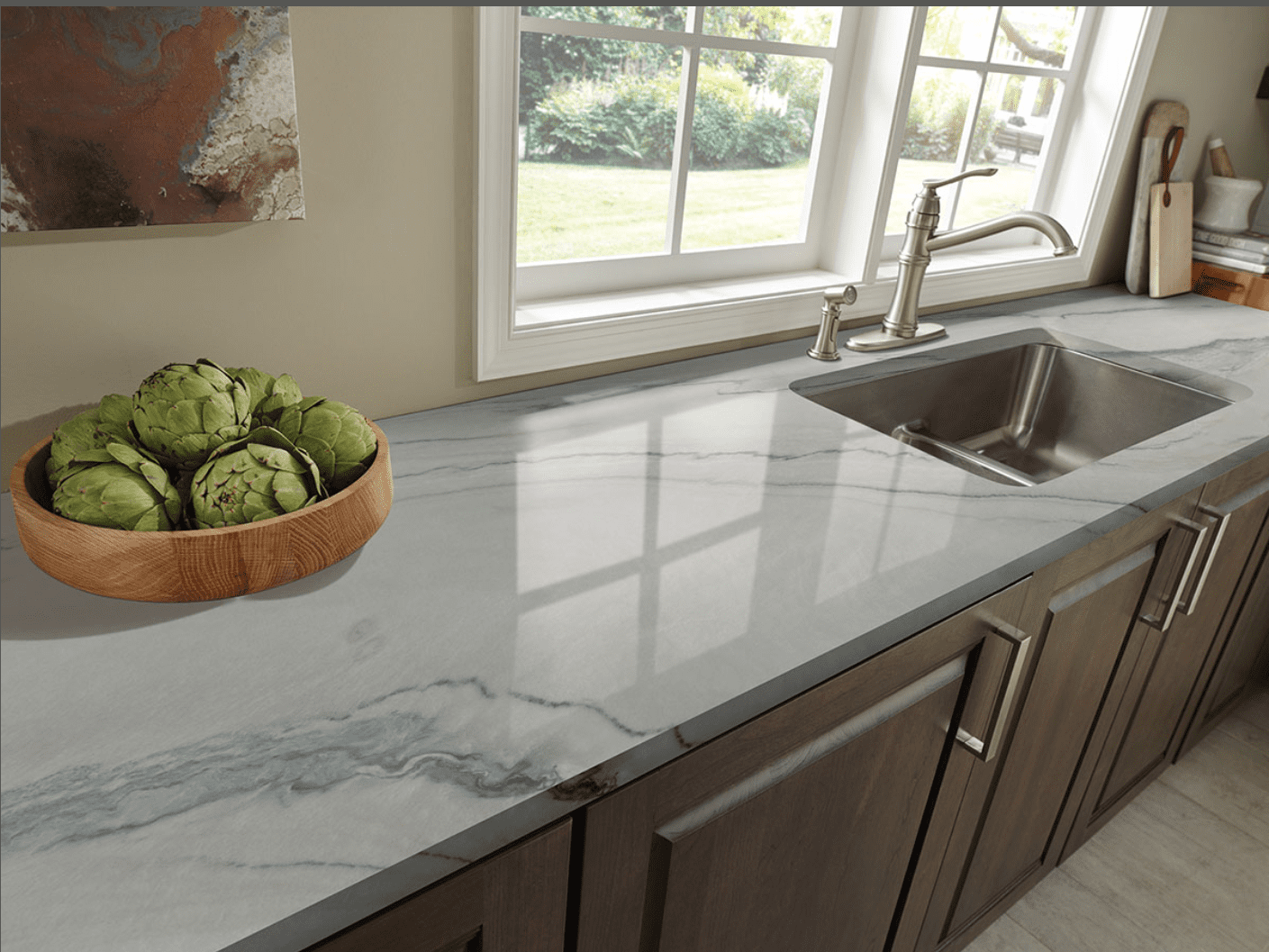
-
- Color: White and gray linear veining
-
- Best For: Sleek contemporary kitchens
-
- Why Choose It? A modern alternative to marble with added durability
Quartzite vs. Other Countertop Materials
To help you make an informed decision, here’s a comparison table showing how quartzite stacks up against other popular countertop materials.
| Feature | Quartzite | Granite | Marble | Quartz |
| Durability | ✅ Very High | ✅ High | ❌ Moderate | ✅ High |
| Heat Resistance | ✅ Excellent | ✅ Excellent | ❌ Poor | ❌ Limited |
| Scratch Resistance | ✅ Very High | ✅ High | ❌ Low | ✅ High |
| Stain Resistance | ✅ With Sealing | ✅ With Sealing | ❌ Low | ✅ High |
| Maintenance | ✅ Low | ✅ Low | ❌ High | ✅ Very Low |
| Aesthetic Appeal | ✅ Natural & Unique | ✅ Natural & Unique | ✅ Elegant | ❌ Uniform & Man-made |
How to Maintain Quartzite Countertops
Maintaining quartzite countertops is straightforward when following proper care techniques. While quartzite is highly durable, its maintenance depends on its porosity, which varies between different types.
1. Sealing Based on Porosity
-
- Low-porosity quartzites (e.g., Taj Mahal, Sea Pearl) require minimal sealing, as their dense structure naturally resists moisture and stains.
-
- More porous quartzites (e.g., White Macaubas, Calacatta Macaubas) should be sealed every 6-12 months to prevent absorption of liquids.
-
- Perform a water test (place a few drops of water on the surface) to check absorption—if dark spots appear, it’s time to reseal.
2. Proper Cleaning Methods
-
- Use mild dish soap and warm water for daily cleaning.
-
- Avoid acidic cleaners (like vinegar or lemon-based products) as they can degrade sealants and cause dulling over time.
-
- A pH-neutral stone cleaner is ideal for preserving the finish.
3. Preventing Damage
-
- Heat Resistance: While quartzite can withstand heat, using trivets or hot pads helps maintain its polished surface.
-
- Scratch Protection: Always use cutting boards instead of cutting directly on the surface, even though quartzite is scratch-resistant.
-
- Avoid Harsh Chemicals: Strong cleaners, rust removers, and abrasives can compromise the finish.
For a detailed guide on keeping your quartzite countertops spotless and well-maintained, check out our How to Clean Countertops page for expert cleaning tips and best practices
Final Thoughts
Quartzite countertops remain a top choice for 2025, thanks to their stunning natural beauty, extreme durability, and low maintenance requirements. Whether you prefer the timeless elegance of Taj Mahal, the modern sophistication of Mont Blanc, or the bold uniqueness of Blue Roma, quartzite offers an option for every style.
Before purchasing, be sure to verify that the stone is a true quartzite using the glass and acid tests to avoid misleading labels. If you’re considering a kitchen or bathroom upgrade, investing in quartzite countertops adds both functionality and value to your home.
Want to see more quartzite colors up close? Check out our Quartzite Countertops Colors page!

